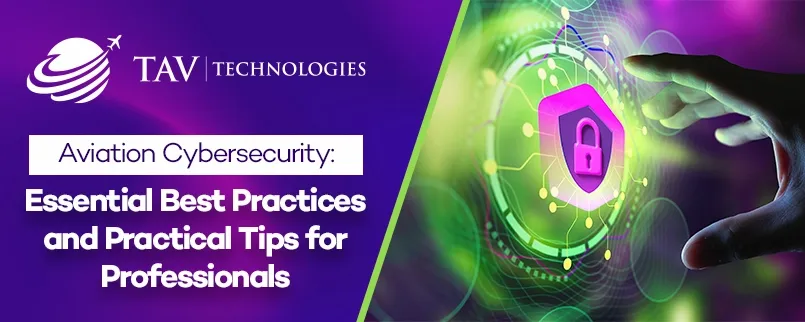
Oct 2024
In today's digital age, cybersecurity is one of the significant topics for the aviation industry. As digitalization continues expanding across all sectors, cybersecurity has become necessary in every field. This is especially true for airports and airlines, where high data traffic and complex systems are increasingly vulnerable to cyber threats. With the growing reliance on technology, airports, and airlines must prioritize protecting their systems and sensitive data to ensure operational continuity and passenger safety. The stakes are even higher in these environments due to the potential impact on public safety and international operations. Here are some practical tips and best practices for maintaining cybersecurity in the aviation sector.
Understanding the Importance of Cybersecurity in Aviation
The aviation industry is a prime target for cyberattacks due to the vast amount of sensitive data it handles, including passenger information, flight operations, and financial transactions. A successful cyberattack can lead to severe consequences, such as flight delays, data breaches, and financial losses. Therefore, aviation professionals need to stay vigilant and implement robust cybersecurity measures.
Major Trends in Aviation Cybersecurity
- Increased Use of Artificial Intelligence (AI) and Machine Learning (ML): AI and ML are increasingly used to detect and respond to cyber threats in real-time. These technologies can analyze vast amounts of data to identify patterns and anomalies that may indicate a cyberattack. These techologies provide enhanced capabilities for cybersecurity through automation, advanced pattern recognition, and predictive analytics
- Adoption of Zero Trust Security Model: The Zero Trust model assumes that threats can come from inside and outside the organization. It requires strict verification for every user and device attempting to access the network, ensuring that only authorized individuals can gain access.
- Integration of Cybersecurity into Operational Technology (OT): As airports and airlines adopt more connected devices and systems, integrating cybersecurity into OT becomes crucial. This includes securing systems such as baggage handling, air traffic control, and passenger screening.
Practical Tips for Aviation Cybersecurity
- Regularly Update and Patch Systems: Ensure all software and systems are up-to-date with the latest security patches. This helps to protect against known vulnerabilities that cybercriminals may exploit.
- Implement Multi-Factor Authentication (MFA): MFA adds an extra layer of security by requiring users to provide two or more verification factors to gain access. This reduces the risk of unauthorized access, even if passwords are compromised.
- Conduct Regular Security Audits and Assessments: Regularly assess your systems and networks for vulnerabilities. Security audits help identify potential weaknesses and implement necessary improvements.
- Provide Cybersecurity Training for Employees: Educate employees about the importance of cybersecurity and how to recognize and respond to potential threats. Regular training sessions can help to reinforce good cybersecurity practices and reduce the risk of human error.
- Develop an Incident Response Plan: Have a clear and well-documented incident response plan. This plan should outline the steps to take in the event of a cyberattack, including how to contain the threat, mitigate damage, and recover systems.
Best Practices for Maintaining Cybersecurity
- Encrypt Sensitive Data: Encrypt all sensitive data in transit and at rest. This helps protect data from being intercepted or accessed by unauthorized individuals.
- Limit Access to Critical Systems: Implement the principle of least privilege, which means granting users only the access they need to perform their job functions. This reduces the risk of unauthorized access to critical systems.
- Monitor Network Activity: Monitor network activity for signs of suspicious behavior. Implementing intrusion detection and prevention systems can help identify and respond to potential threats in real-time.
- Collaborate with Industry Partners: Share information and best practices with other organizations in the aviation industry. Collaboration can help to improve overall cybersecurity resilience and stay ahead of emerging threats.
Following these tips and best practices, aviation professionals can significantly strengthen their cybersecurity and safeguard their systems and data from evolving cyber threats. TAV Technologies’ extensive experience in IT plays a critical role in addressing cybersecurity risks specific to the aviation sector. With expertise in managing complex airport systems and a deep understanding of the industry's unique challenges, TAV Technologies is well-positioned to implement robust cybersecurity solutions. Their knowledge and advanced technology help aviation organizations fortify their defenses, ensuring smooth and secure operations in an increasingly digital landscape. Prioritizing cybersecurity is not just a necessity but a strategic imperative for the future of aviation.
